#Vietnamese mossy frog
Explore tagged Tumblr posts
Text

Vietnamese Mossy Frog (Theloderma corticale)
Photo by Michael D Kern
#Theloderma corticale#Theloderma#vietnamese mossy frog#mossy frog#frog#green#green frogs#moss#amphibians#animals#wildlife#nature
122 notes
·
View notes
Text


Vietnamese Mossy Frogs at the TN Aquarium
6 notes
·
View notes
Text
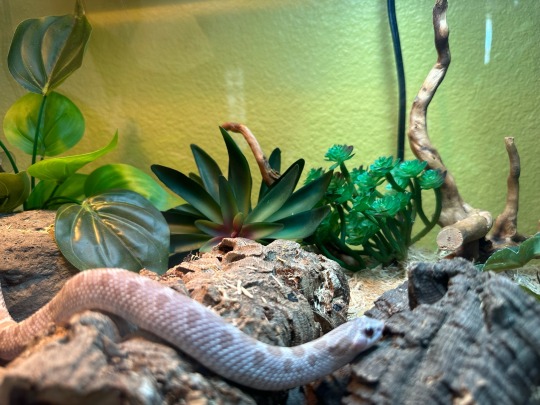

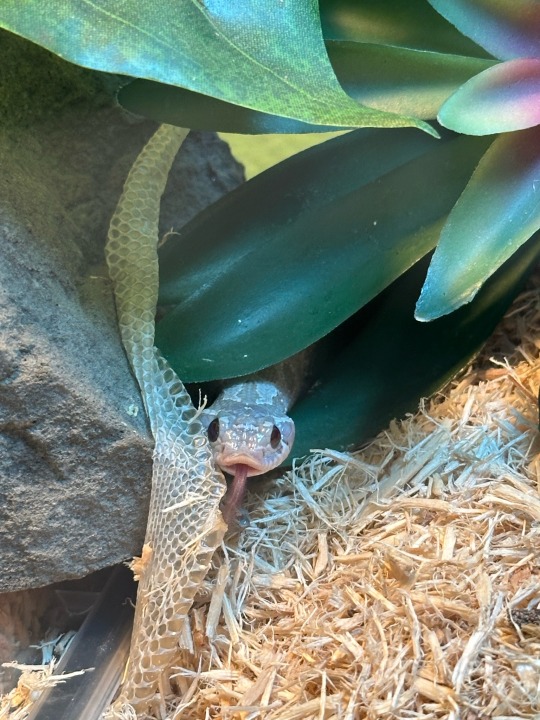
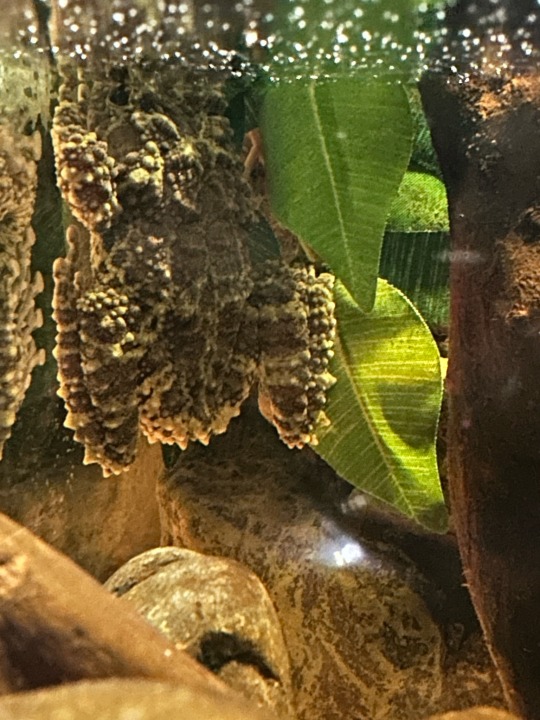
Someone just shed! Plus some Kelpie butt
#jormundgandr#jörmy#lavender hognose#pet hognose#hognose#hognose snake#kelpie the frog#kelpie#pet mossy frog#pet vietnamese mossy frog#vietnamese mossy frog#frog#pet reptile#pet amphibians#pet amphibian#exotic pets#just shed#shed skin
5 notes
·
View notes
Text
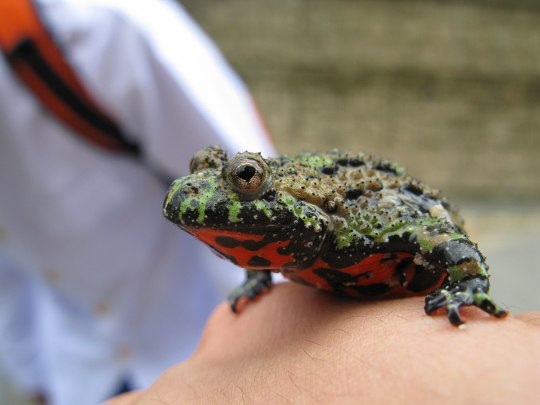

Oriental Fire-Bellied Toad: Found in Korea, and Northeastern Russia and China, these frogs are very intelligent and have found their way through mazes with water as a reward at the end. They lack eardrums and vocal sacs – calling on the inhale instead of the exhale. When threatened, they will arch their head and limbs and then flip onto their back, exposing their brightly coloured stomachs to indicate that they are poisonous. Those toxins are accrued from the insects they eat and secreted in a milky substance from near their legs.
Vietnamese Mossy Frog: This frog’s main defense is camouflage; if it fails, they curl up into a ball and play dead. They hide in caves and in mountain streams carved into the limestone cliffs of Northern Vietnam, either in the water or in crevices in the walls. When breeding, males can project their calls up to 4 metres (13 feet) away, making them difficult to locate by sound. They lay 8-10 eggs in pairs hanging above a pool of water which tadpoles drop into as they hatch 1-2 weeks later.
9 notes
·
View notes
Text








Common House Cricket - Acheta domesticus
Round 3 of Frog Thunderdome! It seems like we're running out of contestants...
In all seriousness, it appears that the Vietnamese mossy frogs inside this terrarium have been enjoying their fill of nutritious leaping insects as the Christmas season approached. Compared to the prior 2 posts from the ROM, the number of House Crickets in the terrarium has diminished (granted, it has been a few months since the last post) with only a few individuals crawling around. Presumably, it's been a little while since the habitat was last topped off. If you look closely at the individuals in these images, you may notice many of them have short, diagonally-positioned dark-colored ovipositors. This indicates an abundance of female Crickets this time around (recall that the males only have 2 cerci at the end of their abdomen), with most of them only having one molt to go before reaching their adult instar. The difference between the two forms (aside from an obvious size increase) is the presence of large, well-defined wings whose tips nearly touch the ovipositor, which itself has become more longer in order to place eggs inside secure, dampened locations.
The fully molted adults also have dark markings along their wings. It's a shame that the individuals here are unlikely to reach adult instar since their are the dinner of the hidden amphibians here, but perhaps at least one could. If there is edible (to the insects) plant-life or perhaps a Cricket carcass with some meat still left on it, that would provide ample nutrients to facilitate and the Crickets must skitter around carefully and avoid entering the range of a frog's mouth on a day where the frog is hungry (a Vietnamese mossy frog may only eat 2 or 3 times a week depending on its metabolism). There is also the scenario where a Cricket can wind up like the individual in Picture 5 who has expended themselves in the terrarium's water. Even the best insects can take a tumble, and these Crickets just aren't built for an aquatic environment. Those that remain steady and vigilant can find safer locations to watch (and jump away) from and can enter small groups for protection. As it goes with other insects, grouped up insects may avoid being eaten as the risk of being eaten yourself decreases, and many individuals watching (and sensing) may allow for a better 'alarm' system if a predator were approach. In this case however, it's only a matter of time before a lone Cricket strays away and the frog's ambush is successfully. So goes the ongoing battle within the Thunderdome!
Pictures were taken on December 19, 2023 with a Google Pixel 4. Please go and visit the bugs if you can.
#jonny's insect catalogue#ontario insect#cricket#common house cricket#vietnamese mossy frog#orthoptera#insect#ROM insect#royal ontario museum#insect exhibit#toronto#december2023#2023#nature#entomology#invertebrates#arthropods#animals#photography
4 notes
·
View notes
Text

Vietnamese Mossy Frog
2 notes
·
View notes
Text

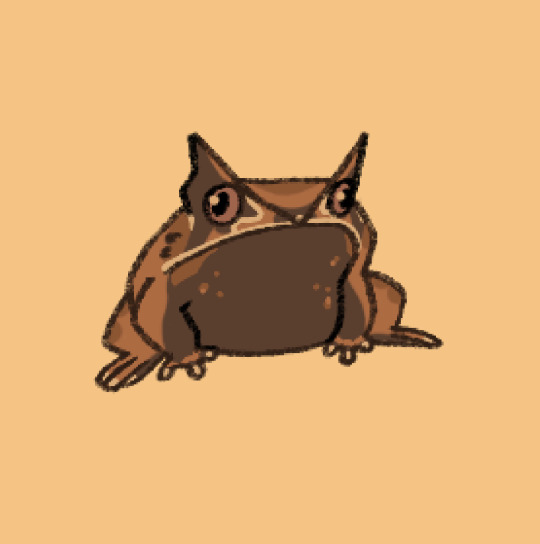
Mossy frog and horned frog my beloveds
2 notes
·
View notes
Text


Met him IRL 😍

1 note
·
View note
Text
Over recent years the Vietnamese mossy frog, Theloderma corticale, has become commonplace in zoo reptile houses, and much more common in the exotic pet trade. This is a frog with good sexual size dimorphism, and the females, being the larger sex, can reach 9 centimeters or 3 and a 1/2 inches in snout to rump length, whilst the males are about an inch smaller by this same measurement. Vietnamese mossy frogs are members of the faunal community present in South Chinese provinces, and the northern, cooler areas of Laos and Vietnam.
Zoologically the frogs of the genus Theloderma nest among the important rhacophorid clade, that is named for the captivating flying frogs of genus Rhacophorus. The stunning Mantella frogs of Madagascar, also have a rhacophorid identity, or if they are not they remain closely allied to them. Rhacophorid frogs in fact nest among frogs with a history of being assigned to the ranid grouping, per their pre-cladistic definition.
Although rhacophorids are often characterised as arboreal frogs, a number of rhacophorid species, including members of the genus Theloderma, are much better categorized as non-arboreal anurans. Although rhacophorids might be called Asian tree frogs, no one believes they are related to the 'true' or hylid tree frogs, some of which are also not arboreal.
Vietnamese mossy frogs actually live close to the ground, in submontane primary forests in association with rocks and hollowed logs. They are always found around water, and they require humid air. When resting they collapse dorsoventrally, and their camouflage as moss is highly effective, making them very difficult to spot.
The regions where T. corticale is native have a seasonal climate, with monthly variations of average temperature, and of precipitation under the influence of the monsoon regime. Although submontane, subtropical environments are not as hot year round as those in the tropical lowlands, the air temperature may be warm in the summer. Koln Zoo has been breeding this species with a daytime air temperature, of 26 to 29 degrees centigrade. and an air humidity of 55 to 90%.
The water temperature was reported as 24 to 28 degrees, and the pH was 8. It might be relevant that wild T. corticale inhabit karst forest, where the geology happens to be limestone. These are not arboreal frogs, and they do not swim actively for long periods of time. Therefore although they are suited to an aquaterrarium, they do not need a large expanse of water. The footprint of the vivarium is at least as important than it's height, although it should be tall enough to allow them some natural clambering behavior.
Theloderma sp. are not very active frogs in any case, so they do not need a very large living space relative to their body sizes. The terrarium decor should include rocks, and also feature wood, because they are found in association with roots and hollow logs. If they can access water, as they should be able to, they must easily be able to get out again. Thus there should easily be shallows in the aquarium.
T. corticale are often housed with other animals in zoo exhibits. As a species they are inoffensive to other animals that they will not see as prey, and they easily cohabit with appropriately sized, peaceful species that use different areas of the same exhibit. T. corticale have been known to eat very small fish, so they should not be housed with animals they might be able to gulp down. For reference they usually eat items no longer, than the distance between their eyes.
0 notes
Text
Creature Awaits #235
Each week I plan to feature an amazing creature, admiring God's fantastic artistry. Hopefully it’ll brighten someone’s day to see something new and interesting if they haven’t seen it before. : )
Due to personal and work-related issues, I missed posting last week, so we're getting a double-post this week to make up for it. Apologies for the delay again! Hopefully things will be better again soon. : )
First, our final November camouflaged creature feature… : )
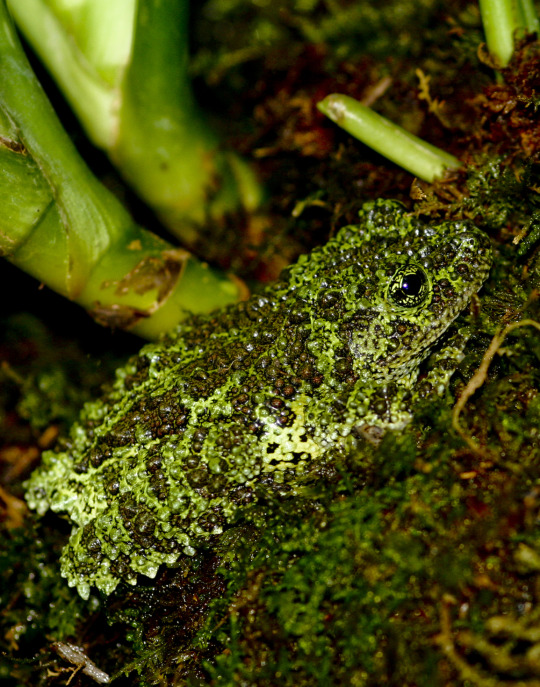
(Beautifully photographed by the talented, Brian Gratwicke (CC BY-NC 2.0 Deed))
The Vietnamese Mossy Frog
Scientific Name: Theloderma corticale
Region: Northern Vietnam through southern Laos and China
Size: About 2.4" (~6.1cm) long
Interesting Notes: This beautiful little frog's bumpy skin and mottled markings help it seamlessly blend into mossy forest floors and lichenous rock facings alike.
#creatureawaits#camouflage#interesting animals#cute animals#frogs#Vietnamese mossy frog#Theloderma corticale
0 notes
Text
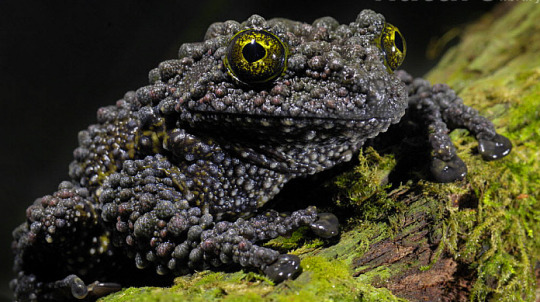
Vietnamese Mossy Frog (Theloderma corticale), Vietnam
Photo by Michael D Kern
#mossy frog#vietnamese mossy frog#frog#theloderma#theloderma corticale#amphibians#tropical frogs#black#black frog#gray frog#animals#wildlife#nature#tropical
130 notes
·
View notes
Text
🥦Happy 4/20, everyone! 🥦


today's funky frog of the day is: the vietnamese mossy frog (Theloderma corticale)! this beautiful friend is found in vietnam, china and laos! they are well-known for the pattern on their skin that resembles moss- this is great camoflauge for them! (x)
2K notes
·
View notes
Text

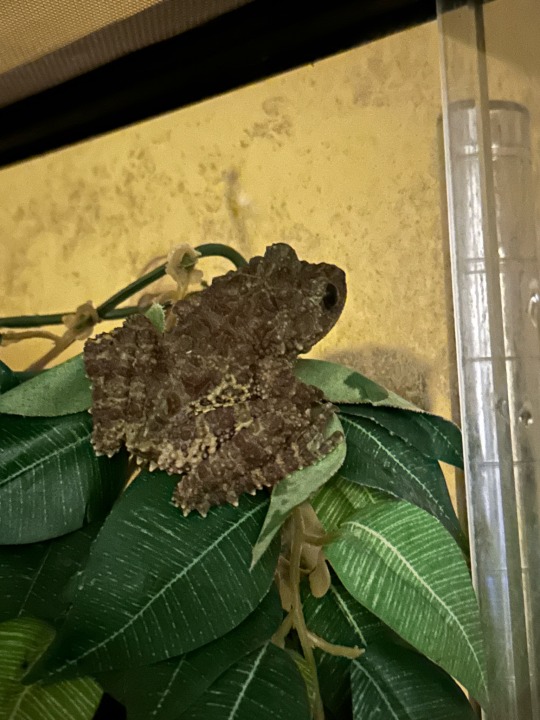

This weeks critters photos. Lucius is enjoying a habitat clean out and the frogs are just vibin.
#lucius#banana ball python#banana pinstripe python#banana royal python#ball python#royal python#pet pythons#pet python#pet snake#snake#pet reptile#reptile#kelpie#vietnamese mossy frog#pet mossy frog#mossy frog#leopard frog#pet leopard frog#crepe the frog#kelpie the frog#pet frog#frog#pet amphibian#amphibian#singing frog#cute frogs#cuties#love my snek#snek#bioactive terrarium
6 notes
·
View notes
Note
GIVE ME PICTURES OF YOUR FAVORITE FROGS!!!! 🪱
OFF THE TOP OF MY HEAD THE VIETNAMESE MOSSY FROG

LIKE LOOK AT HIM

NOT A THOUGHT BETWEEN THOSE EYES
0 notes
Photo







Common House Cricket - Acheta domesticus
Welcome back to the Frog Thunderdome!
All kidding aside, this is a follow-up to an earlier post featuring the insect inhabitants within this verdant terrarium. This is not their home however! The tank that these Crickets hop and crawl in belongs to a group of Vietnamese mossy frogs; the former are the food source for these well-camouflaged amphibians. There’s plenty to eat and they are chock-full of nutrients (I assume that they’re gut loaded for maximum nutrition) to satisfy the appetite of a hungry frog. There’s no images here of a frog catching a Cricket within the ROM, but those of you with keen eyes should be able to find some frogs remaining still. It’s the slowest Thunderdome of all time, but it’s still satisfying to watch the Crickets scurry and navigate their way around the “jungle” they’ve been dropped into. The Crickets you’re more likely to find in the wild tend to jump into the grass or quickly hop away on approach, so to be able to see their gait, locomotion and jumping ability without obstructions is very informative. They’ll need to be careful where they land though, as a fall in the pond will signal the perfect opportunity for a quick snack for a frog. If the Crickets are quick on land however, they might be able to dodge a well placed tongue shot/frog bite and hide away inside a woody crevice.
Compared to last time, there’s actually a few individuals with developed wings! The most prominent are featured in Picture 1. It’s unclear when/where they molted, but if there’s time to molt while in the terrarium, the excess exuvia may provide more foodstuffs for the frogs. Furthermore, I noticed that this time there was a large aggregation of Crickets gathered within the terrarium on a log, while the rest of the Crickets stay together with only a few individuals and have scattered around the area. Are we seeing two different defense strategies at work here? On one hand, prior aggregations demonstrate strength in numbers and less likelihood that a specific insect will be eaten when another one is available. On the other hand, a lone Cricket could be more vulnerable to predation, but the effort exerted to capture it has to be enough to satisfy the hungry insectivore. In some cases, it may be better to let the prey go, choose another prey item or wait for it to come closer to waste less energy on the hunt. The lattermost is likely what happens, unless the surrounding area is bereft of Crickets and the frogs need to reconsider their position. I have yet to this for myself however, as the frogs barely move inside their exhibit. Since these frogs are nocturnal they may just be waiting for the lights to turn off before they take a more active hunting strategy. I’d be very eager to see more of this predator/prey dynamic in action, but I don’t think the ROM stays open that late.
Pictures were taken on May 16, 2023 with a Google Pixel 4. Please come and see the bugs if you can...even if these ones might be eaten tomorrow. It is frog territory after all.
#jonny’s insect catalogue#ontario insect#cricket#common house cricket#vietnamese mossy frog#orthoptera#insect#ROM insect#royal ontario museum#toronto#may2023#2023#entomology#nature#insect exhibit#invertebrates#arthropods#animals#photography
2 notes
·
View notes
Text

Amphibuary day 11: Painted! It’s nice to break out the ol’ acrylics every once and a while. This guy is a Vietnamese mossy tree frog!
#amphibuary#amphibiuary2023#mossy tree frog#vietnamese mossy tree frog#these lil guys are so fun to look at! they blend into their environment super well.
149 notes
·
View notes